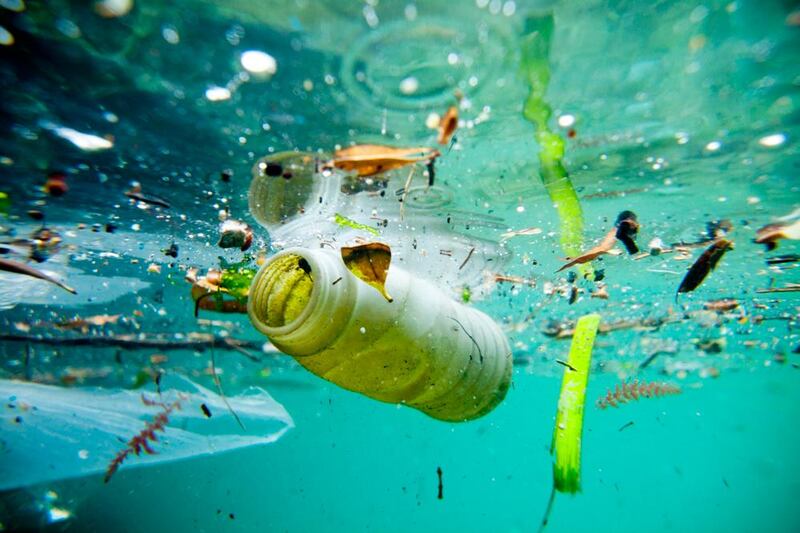One million every minute, of every hour, of every day, of every year: right now that's how many single-use plastic bottles are sold around the world, usually containing just water or soft drinks. Don't bother trying to work it out, it comes to just over half a trillion a year, and if we don't change our ways, the number will, according to Greenpeace, quadruple by 2050.
Undoubtedly this is great news for the manufacturers, as well as the oil and petrochemical companies that sell the raw materials used to make plastic bottles. For the planet, though – especially its oceans – the outlook is dire to the point that, by that aforementioned year, scientists are claiming that the amount of plastic waste in our seas will outweigh fish.
'The shores are absolutely covered with bottles'
How do plastic bottles end up in the sea? Apart from being tossed overboard by absent- minded mariners and passengers, or being left on the beach by visitors who should take their rubbish home with them, they end up blowing away from landfill, entering streams that become rivers. And those rivers head for the ocean, with untold numbers of plastic bottles and other detritus bobbing along to their new oceanic homes.
They do not degrade, or break down. They become brittle, eventually break into smaller pieces and become magnets for other pollutants before being mistakenly eaten by marine life, thus entering the food chain. In August last year, Britain's Plymouth University reported that plastic was discovered inside a third of the fish caught in the United Kingdom – including shellfish, cod and haddock.
Sarah Jones is a part-time diving instructor in the UAE who, along with large teams of fellow volunteers, takes part in beach clean-ups throughout the year. "The shores are absolutely covered with bottles," she tells me. "And when I'm diving, they're always present in the water, too. I end up collecting them, and once filled seven large bags with nothing but plastic bottles during a dive off the coast of Dibba. It was soul-destroying; I was crying as I came to the surface."
Poisoning yourself with plastic
It isn't just bottles, either. According to the United Nations, Americans throw away 25 billion plastic cups every year, and the amount of "paper" containers chucked in the bin after a coffee is unfathomable. Thing is, they're lined with a thin layer of, you guessed it, plastic, to keep the liquid from seeping through.
Most bottles are made from a substance known as polyethylene terephthalate, more commonly referred to as Pet. This is a fully recyclable material, although only about 10 per cent of the solid chemical pellets used in the manufacturing process are from recycled sources. And that's because the higher the content of previously used plastics, the less transparent the resultant bottles will be. And the drinks companies like consumers to see the contents, so there's little incentive for them to change their ways.
China is currently the world’s leading consumer of bottled drinks, with increasing urbanisation, concerns about tap-water quality and groundwater contamination driving the demand. The irony here is that plastic bottles themselves are poisoning the groundwater people are so afraid of drinking – a classic example of the snake eating itself.
What you can do to help facilitate change
How, then, can we make a difference? Some of the answers are obvious, like buying a refillable bottle to use at the gym, the office or when going for a walk – something most of us could do. Retailers will soon have to toe the line by finding ways for consumers to be able to use refillable containers for their water, too, as more governments around the world are beginning to outlaw single-use plastics.
_______________
Read more:
The final straw: here are the alternatives to plastic
Profligate plastic waste needs action now
Exclusive: Gulf states consider zero landfill target for plastics by 2040
Plastic particles found in leading brands of bottled water
_______________
Other uses for existing bottles are less obvious, such as fishing boats made by people in Cameroon using 10,000 reclaimed drinks containers; with the lids on, they make for tough and long-lasting buoyancy aids. Sports brand Adidas using 11 million reclaimed bottles to make a million pairs of shoes. You have to admire the sheer inventiveness of human beings sometimes.
But while we’re probably not in need of such a craft, we could install water filters in our homes so that tap water would be perfectly palatable. There’s nothing wrong with it, after all, apart from the slightly strange taste, but filters do away with that.
We humans are the only living creatures on earth to generate waste that nature cannot digest. It’s no exaggeration to say, then, that we’re doing the planet the greatest disservice because of our thoughtless actions, habits and outright demand for personal convenience.





